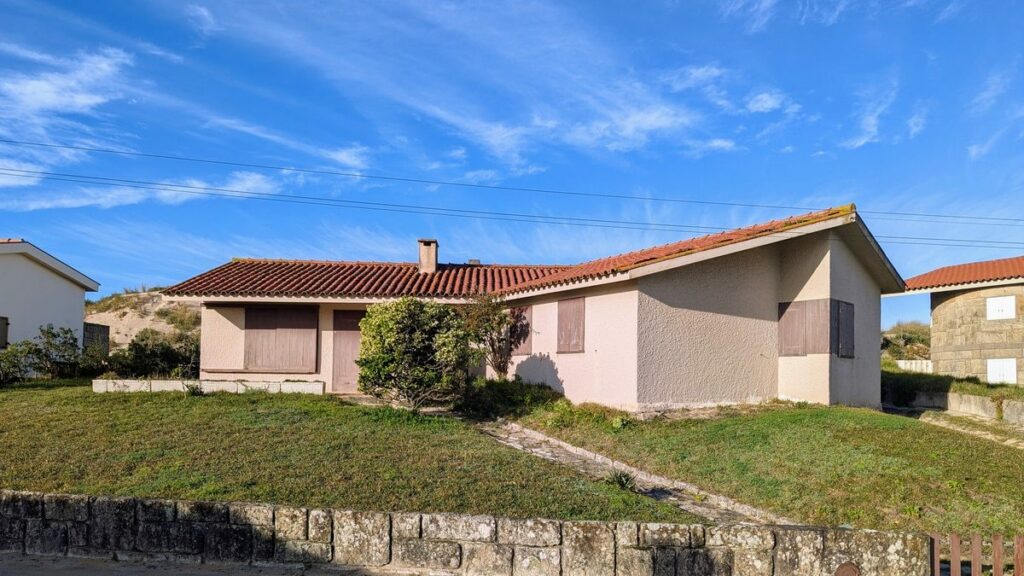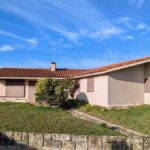A House for the Wind and the Sea
In the early 1960s, a couple from Porto—drawn by the whisper of the Atlantic and the golden expanse of Praia de Suave Mar—set their sights on a dream. They longed for a retreat, a place where the rush of city life would dissolve into the steady rhythm of waves. Their land was extraordinary: nestled within the protected dunes, kissed by salt air, and just a stone’s throw from the beach. It was a place where the land itself seemed to breathe.
But this was no ordinary site. It came with restrictions, challenges—an ecosystem to protect, a climate to contend with. They needed an architect who could listen to the land, who could shape a house that didn’t fight against nature but moved with it. That architect was Alcino Soutinho.
Soutinho didn’t impose. Instead, he observed. He watched how the dunes shifted, how the wind carved patterns into the sand, how the ocean, in its eternal movement, never asked permission to change the coastline. And then, with a quiet confidence, he designed a house as if it had always belonged there.
A Form Born from the Landscape
From the road, the house reveals itself modestly, set back behind a simple stone wall, half-hidden by the vegetation. It does not demand attention, yet it lingers in the mind—a low, angular form that seems to anchor itself into the earth rather than rise above it.
Step inside, and the house unfolds like a well-kept secret. A triangular structure, almost like a three-pointed star, dictates the flow of movement. Each wing of the house serves its own quiet purpose: one for living, another for resting, and a third for the daily rituals of cooking and gathering. This is not a grand summer villa, but something more intimate, more intentional.
The living room, with its large openings, welcomes the ever-changing moods of the ocean—the morning light spilling across the slate floors, the late afternoon breeze slipping through the wooden shutters. The bedrooms, nestled in the quieter wings, are places of stillness, where the hum of the sea is a lullaby. And just beyond, tucked away like a hidden passage in a novel, a discreet door leads directly to the beach. It is a path worn smooth by bare feet, by saltwater-sticky children racing toward the waves, by evenings spent watching the sky turn to fire before the night hushes everything into indigo.
Built for the Elements, Rooted in Tradition
This is a house made for the wind. A long, solid wall cuts through the structure, shielding it from the fierce northern gusts—the same kind of protective barrier found in traditional northern Portuguese homes. Soutinho understood that architecture here had to be both a shelter and a frame for nature. He chose materials that felt of the place: granite for permanence, wood for warmth, terracotta tiles for a touch of the familiar. The textures echo the landscape—the roughness of stone like the cliffs along the shore, the sandy-hued plaster catching the light just as the dunes do.
But there is another layer of thought woven into the house’s design. This is a home that spends most of the year in quiet slumber. The owners visit in August, when the days are long and the Atlantic is at its most inviting. For the rest of the year, it waits. Soutinho planned for this, too—designing wooden shutters that slide into place, transforming the house into a closed shell, protected from the elements and the passage of time.
A House That Belongs
Decades have passed, yet the house in Praia de Suave Mar remains timeless. It has not aged; rather, it has settled, as if it has always been part of this landscape. The sea air has softened its edges, the dune grasses have crept closer, and the sun continues to paint its walls in changing shades of gold.
Soutinho’s house is not a monument; it is an experience—of summer mornings filled with laughter, of barefoot evenings on cool stone floors, of the sound of waves echoing through open windows. It is a house that listens, that breathes, that belongs.
📖 This story is based on research from the Master’s Dissertation in Architecture and Urbanism:
“As Casas de Alcino Soutinho: Estudo das Habitações Unifamiliares entre 1963 a 2003”
by Ana Rita Moreira





